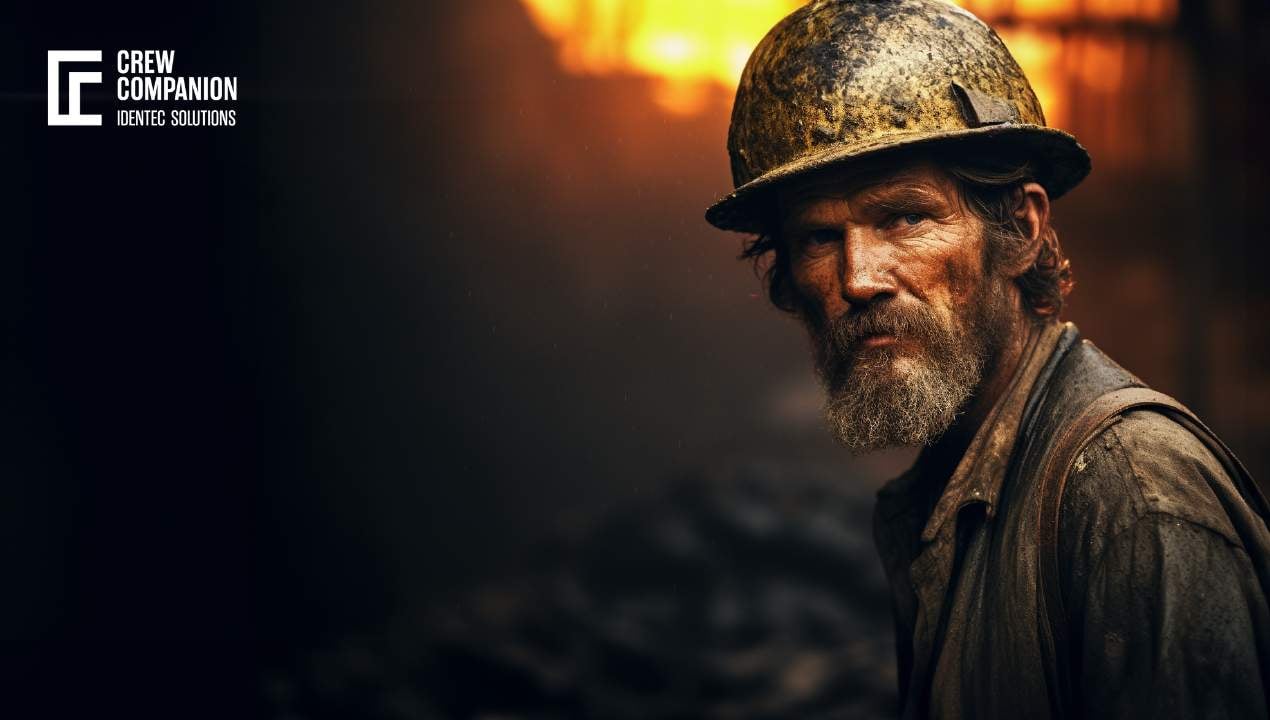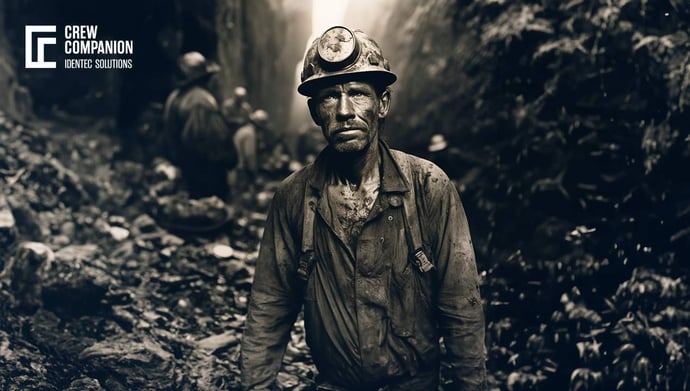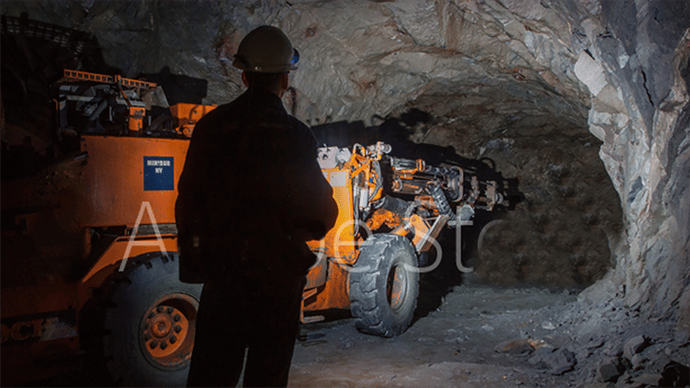Mining in California - The Days of the Gold Rush
| Written by Michal Wozniakowski-Zehenter

No video selected
Select a video type in the sidebar.
THERE WAS A TIME
It was generally believed that California was a remote land with diverse indigenous populations and a handful of Europeans and missionaries before this monumental discovery. A beautiful place with vast landscapes and promising agricultural potential, California quickly became a bustling hub of activity after its hidden wealth emerged. Gold diggers from Latin America (see also: Mining in Mexico), Europe, Australia, and Asia came from all over the world, drawn by the dream of striking it rich.
California was profoundly affected by the Gold Rush. Its promises of wealth spurred an enormous population boom, with more than 200,000 non-indigenous people living there by 1852, compared to 14,000 in 1848. In the aftermath of the Gold Rush, cities like San Francisco, which was a small settlement, grew exponentially, becoming major cities. Mining in California and California became increasingly connected to the rest of the nation as a result of the Gold Rush. Beyond infrastructure, it also left a lasting impact on the state's social and cultural fabric. A diversity of people and cultures enriched the mosaic but also resulted in clashes, particularly between native populations who suffered displacement and often violent conflict. The discovery of gold at Sutter's Mill two years earlier and California's growing population quickly made statehood an imperative. California became the 31st state two years after its discovery.
As we delve deeper into the sections ahead, the multifaceted dimensions of the Gold Rush, from the struggles of individual miners to its vast societal implications, will be laid bare, offering insights into defining times in American history (read more about mining the United States after 1875).
IT’S THERE!
Carpenter James Wilson Marshall, originally from New Jersey, began constructing a sawmill along the American River in the Sierra Nevada foothills in January of 1848, for Swiss immigrant and landowner John Sutter. As Marshall inspected the tailrace of the mill one chilly morning, he noticed some shiny flecks.
His confidence grew as he conducted rudimentary tests, including biting the metal and observing its malleability. Despite the fact that maintaining a secret in such an ambition-filled land was impossible, he approached John Sutter with his findings and together, in secrecy, they verified the authenticity of the discovery. In addition to spreading the news widely, Sam Brannan, a local merchant and newspaper publisher, is often credited. In San Francisco, Brannan is credited with shouting, "Gold! Gold! Gold from the American River!" The proclamation wasn't purely out of excitement; Brannan was a businessman.
There were news stories about gold discoveries in California on the East Coast by mid-1848. When President James K. Polk confirmed the discovery in December, the news was officially branded as authentic, setting the stage for a wave of unprecedented migration to follow. The gold fever spread like wildfire. In the Gold Rush, California was no longer the only place where gold was found; it spread around the world.

MINING IN CALIFORNIA: THE 49ERS
Many gold seekers travelled to California in 1849, when the term "49ers" was coined to refer to the wave of gold seekers. It was not an easy nor safe journey for the 49ers to reach California. They came from a variety of backgrounds, including farmers, teachers, doctors, and many others. The journey to California was neither easy nor safe. They followed three primary routes – by land, sea, and overseas. Over 2,000 miles of deserts and mountains were traversed on this route, and Native American tribes were always on the lookout for them. It was an arduous and lengthy journey, testing the endurance and spirit of gold seekers. A second segment chose the maritime route, navigating treacherous waters around Cape Horn before sailing up the West Coast to reach California. It wasn't just Americans who sought gold. Thousands from Latin America, Europe, Australia, and Asia, particularly China, added to the cultural as well as demographic diversity of the U.S. mining towns.
Mexico, Peru, and other Latin American countries were the first gold seekers (compare also: Mexican mines). Many Europeans, mostly from Ireland, Germany, France, and Italy, joined the Gold Rush to share their mining techniques. Gold Rush refugees brought their distinct cultures, traditions, and skills with them as they sought adventure or fled economic hardships. The arrival of these diverse groups has contributed unique cultural elements, particularly in cuisine and art. They contributed to the melting pot of cultures, beliefs, and practices that followed their arrival.
Impact on the history
Reflecting on the global impact of the California Gold Rush, Malcolm Rohrbough, author of "Rush to Gold: The French and the California Gold Rush," explained that the Gold Rush quickly became a worldwide phenomenon. Initially, the first arrivals were from Oregon, the Hawaiian Islands, Chile, Peru, and Mexico in 1848, followed by a large-scale emigration from the East Coast of North America, Western Europe, and later Australia, New Zealand, and China.
In an interview for HistoryNet (1), Rohrbough stated, “From the beginning of the spread of the news, the Gold Rush was a national and then a world event. In 1848 came the first arrivals from Oregon, the Hawaiian Islands, Chile, Peru and, especially, Mexico. In 1849 the first large-scale emigration from the East Coast of North America (including Canada), Western Europe (England, Ireland, France, and Germany). And in 1850 and 1851, Australia, New Zealand and, finally, China. These waves transformed San Francisco into the most cosmopolitan city in the world and the gold camps into communities united by origin and language. (…) Deep scepticism as an event that was beyond reason and also too American. The French doubted the reports of American newspapers, which they found filled with “puff” (the favourite French word to describe American journalism). Others thought the rumours of gold were a plot hatched by the American government to people in the vast empty spaces of the new continental empire, formally created by the Treaty of Guadalupe Hidalgo. What persuaded them? President James K. Polk’s address to Congress of December 6, 1848, in which he confirmed the gold discoveries. The French believed the president and the unnamed officials in a way they did not believe the newspaper editor.”
LIFE AROUND THE GOLD
Temporary settlements of the Gold Rush sprung up in California's breathtaking landscapes, surrounded by majestic mountains and serene rivers. In these gold fields teeming with activity, optimism, and sometimes despair, dreams came alive. Men and women from diverse backgrounds converged here, hoping to make their mark in the world. A variety of mine camps, often set up quickly, included tents, wooden buildings, and stores and saloons. With the increase in miners, some of these camps expanded into larger settlements or boomtowns, with saloons, stores, and theatres. In the Gold Rush, San Francisco became the primary supply centre and port. Although not a mining camp, its population exploded; it quickly evolved into a major metropolitan area. Despite boomtowns flourishing for a while, miners left, leaving ghost towns behind as the easily accessible gold diminished.
It was not a place for the faint-hearted to live. As a result of the influx of people, and the absence of a structured legal system, crime increased significantly. There were many crimes, including theft, claim jumping, and violence. Because law enforcement was lacking, miners often took matters themselves. In the Gold Rush era, extrajudicial actions like these became a hallmark, indicating the difficulties of regulating a society in rapid transition.
More than ambition, becoming a successful miner required physical labour, resilience, and knowledge of mining techniques. Placer mining, which involves using simple tools like pans and sluices to extract gold from riverbeds, was common during the Gold Rush. Mining methods like hydraulic mining became more complex as the surface gold depleted. As staples, beans, bacon, and bread were often the diet. There were few fresh vegetables or fruits, which resulted in diseases like scurvy. Miners faced numerous challenges in addition to the physical toll. The claims were often tiny, and not every claim yielded gold. In the gold fields, life was a paradox for many miners. Many ended their quest empty-handed or in debt. In spite of these challenges, many miners found value in the promise of gold, camaraderie among their colleagues, and sheer adventure.
Mining in California - the economic impact
The Gold Rush was not merely an event of people digging for shiny metal; it was a colossal economic phenomenon that spurred rapid development and had long-lasting implications for California and the nation. Within the first few years, the gold output was staggering. By the end of 1849, miners extracted an estimated $10 million worth of gold. This number soared into hundreds of millions in the subsequent years, leading to a boost in the American economy. While not every miner struck gold, those catering to miners often did. Merchants, hoteliers, and other service providers thrived. Samuel Brannan, who publicized the discovery of gold, became California's first millionaire, not from mining, but by selling supplies to miners.
Infrastructure advancements were a result of the need to transport people and goods. With ships ferrying immigrants and goods, San Francisco's port became one of the busiest in the world. In order to facilitate movement, roads were constructed, and later, railroads were built.
The financial demands of the Gold Rush led to the development of a robust banking system. Early banks saw the need for secure financial transactions and sprouted. The banking empire Wells Fargo was established in 1852 initially as a mail and express delivery service for gold. The U.S. Mint was established in San Francisco in 1854 in order to convert gold dust and nuggets into standardized currency.
How Did the Gold Rush Transform California's CULTURE?
As a result of the Gold Rush, more than a major economic boom, California was reshaped demographically and culturally, laying the foundation for its future diversity. The allure of gold brought people from around the world. In this multicultural setting, European, Asian, and Latin American influences were intertwined with indigenous and pioneer cultures. Cultural diversity and rapid population growth weren't without challenges. There were devastating consequences for the original inhabitants. Many had been displaced from their ancestral lands, faced violence, and contracted diseases for which they had no immunity. Chinese miners were especially subject to discrimination, unfair taxes, and violence at times.
With the Gold Rush, a cultural blossoming occurred. Theatres, music halls, and bars became widespread as a means of entertainment for miners and settlers. Stories of those times captivated many, leading to local newspapers and a surge in inspiring literary works. Several writers, including Mark Twain, found inspiration in the era.
ENVIRONMENTAL LEGACY
By digging, panning, and sluicing their way through California's landscapes, miners unintentionally changed the environment. The quest for gold had profound and lasting effects on the natural ecosystems of the Golden State. High-pressure water jets were used to wash hillsides away and extract gold with this technique. A process known as amalgamation was used by miners to extract gold from ore. Mercury separated gold from sediment, but it also polluted rivers and lakes unintentionally. Some California waterways still contain high levels of mercury, a ghostly residue of the Gold Rush era.
The rapid growth of mining camps and boomtowns required timber for construction. Vast tracts of California's forests were felled to meet this demand, leading to habitat loss and changing the state's forest landscape permanently. Deforestation, coupled with hunting and habitat alteration, led to the decline of many wildlife species. The California grizzly bear, which once roamed freely, became extinct due to these pressures.
It was found that extensive digging and mining led to significant soil erosion, destroying fertile topsoil in many areas and altering agricultural potential. Several of these scars are still visible today, reminding us of the environmental costs of the Gold Rush. Large-scale mining, particularly hydraulic mining, shaped hillsides and valleys.
Although the Gold Rush brought environmental challenges, it also sowed the seeds for environmental awareness. Environmental challenges resulted from hydraulic mining. The U.S. Circuit Court ended hydraulic mining in 1884 because of its environmental impacts, setting a precedent for environmental litigation to follow in the future. Wilderness areas were protected by visionaries such as John Muir, eventually resulting in national parks.
When Did THE Gold RUSH End in California?
While the Gold Rush era was characterized by fevered excitement, boundless hope, and transformative change, it could not last forever. The twilight of this era was marked by exhausted mines, shifting economic dynamics, and a changing social landscape. As the easily accessible deposits near the surface were exhausted, miners had to dig deeper, making extraction more challenging and less profitable for the average prospector. The shift to deeper extraction favoured large mining operations with the capital to invest in advanced machinery and labour. Many independent miners, unable to compete, either left the profession or became wage workers for these larger entities.
In the late nineteenth century, many miners turned to farming as the focus on gold waned. Due to its fertile soil and diverse climate, agriculture became a dominant force in California's economy. Trade and commerce flourished because of an established infrastructure and a booming population. Cities such as San Francisco became centres of business and trade. Despite the outflux, many people returned home, invested in urban areas, or took up farming. Despite the outflux, California became a more stable and established city with schools, churches, and civic institutions.
Mining in California - Gold Legacy
The frenzy of the Gold Rush might have subsided, but its impacts are deeply etched into the history and fabric of California. Beyond the tales of fortune and failure, the Gold Rush influenced the state’s trajectory in profound and multifaceted ways. The exponential population increase and economic boom expedited California's path to statehood. In 1850, just two years after the start of the Gold Rush, California bypassed the territorial stage and was admitted as the 31st state of the Union. The unique challenges of the Gold Rush era—land disputes, crime in mining camps, and diverse populations—necessitated the formulation of state laws and governance structures, many of which laid the groundwork for future legal and governance frameworks.
In the same way that the American Dream was established during the Gold Rush, the California Dream became synonymous with adventure, opportunity, and the opportunity to begin a new life (learn also about the history of mining in Canada). California became one of the most diverse states in the U.S. thanks to its multicultural tapestry formed by the Gold Rush—from Chinese to Latin American to European. Agricultural production, boosted by fertile lands and a diverse climate, became a cornerstone of California's economy as gold dwindled. The state also saw growth in sectors such as shipping, railroads, and manufacturing. The Gold Rush legends and landmarks became their own attractions. San Francisco 49ers or Golden State Warriors are two beloved sports teams from the state.
Newfound wealth from the Gold Rush allowed institutions like the University of California to be founded, which went on to contribute in a wide range of fields, from the arts to science. The Gold Rush led to innovation in mining. Methods and equipment developed during this time found their way into other industries and regions. Even though it has passed, the modern tech boom centred around Silicon Valley is like the Gold Rush in a way. Innovators drive the industry, and outstanding ideas are rewarded (learn more about safety topics in mining in the past here)..
FAQS
Is there mining in California?
Public lands in California provide opportunities for the exploration, development, and production of mineral resources, one of our most basic natural resources. With California's high population and large urban interface, mineral materials such as sand, gravel, and crushed stone are extracted from U.S. Department of the Interior -Bureau of Land Management administered public lands are used for ready-mixed concrete, asphalt, and many other building materials. Making locally available aggregate supplies available on public lands helps reduce consumer costs and environmental impacts.
The California gold rush of the 1800s continues today with small miners mining for gold and silver in more than 5,000 mining claims and where rockhounders search for rocks, minerals, and gemstones on public lands.
Is gold still mined in California?
Gold was first found in what is now the Sacramento region in the 19th century, sparking the historical Gold Rush; but more than a hundred years later, gold fever is still running rampant. Many locals from the Sacramento area, like Fierro, take part in recreational gold mining.
TAKEAWAY
Despite being just a blip of time in history, the California Gold Rush managed to leave a lasting impression not just on the state, but on the nation at large. This tumultuous and transformative era embodies the human spirit's boundless ambition and pursuit of fortune. Understanding its multifaceted implications and enduring legacy is crucial as we reflect on it.
California’s rapid metamorphosis from a sparsely populated region to an economic powerhouse underscores the transformative power of opportunity. The Gold Rush didn't just bring gold; it laid the foundation for diverse industries, from agriculture to commerce to technology, setting the stage for the state’s future prosperity. The era was a melting pot of cultures, ethnicities, and stories. This amalgamation of diverse backgrounds contributed to California's rich cultural tapestry and set a precedent for the state’s reputation as a beacon of diversity and inclusivity. The environmental scars of the Gold Rush era are stark reminders of the costs of unchecked progress. They paved the way for early conservation efforts and an understanding of sustainable practices, lessons that remain relevant in today's global conversations about environmental stewardship.
In spite of the fact that gold panning has long ceased, the spirit of the Gold Rush continues to live on. Like the Forty-Niners of the past, Silicon Valley's tech innovators as well as Hollywood's dreamers continue to attract aspirants to California for the allure of striking "gold" – be it in innovation, arts, or entrepreneurship.
Dive deeper into one of our core topics: Miner Safety
Glossary
Amalgamation - is a basic process that uses mercury, extracted from local cinnabar deposits, to recover gold. Heating the amalgam volatilizes the mercury, leaving behind gold for further refinement into jewelry and coins. This method remains widely used in many small-scale alluvial gold mines worldwide. It also serves as a valuable model for understanding how ancient civilizations practiced alluvial gold mining. By replicating this process, researchers can gain insights into historical mining techniques and their impact. Despite its simplicity, amalgamation poses environmental and health risks due to mercury exposure, making sustainable alternatives increasingly important in modern mining practices. (2)
Sources:
(1) https://www.historynet.com/interview-with-author-malcolm-rohrbough/
(2) https://www.scirp.org/journal/paperinformation?paperid=73830
Note: This article was updated on the 11th of February 2025





